You could see all these 10 Lisbon highlights in one day
As one of Europe’s oldest capitals (beaten only by Athens), Lisbon boasts a vibrant history that’s evident around every corner.
Attractions such as Belém Tower, Jerónimos Monastery and the Santa Justa Lift give you the chance to gain insights into Lisbon’s heritage through the ages. And for views of the city’s oldest neighbourhoods and landmarks, you can ride the iconic Tram 28.
Seeing everything the Portuguese capital has to offer would take more than a lifetime, which is why this guide details the city’s top historic highlights that you simply need to visit during your stay – especially if this is your first trip to Lisbon.
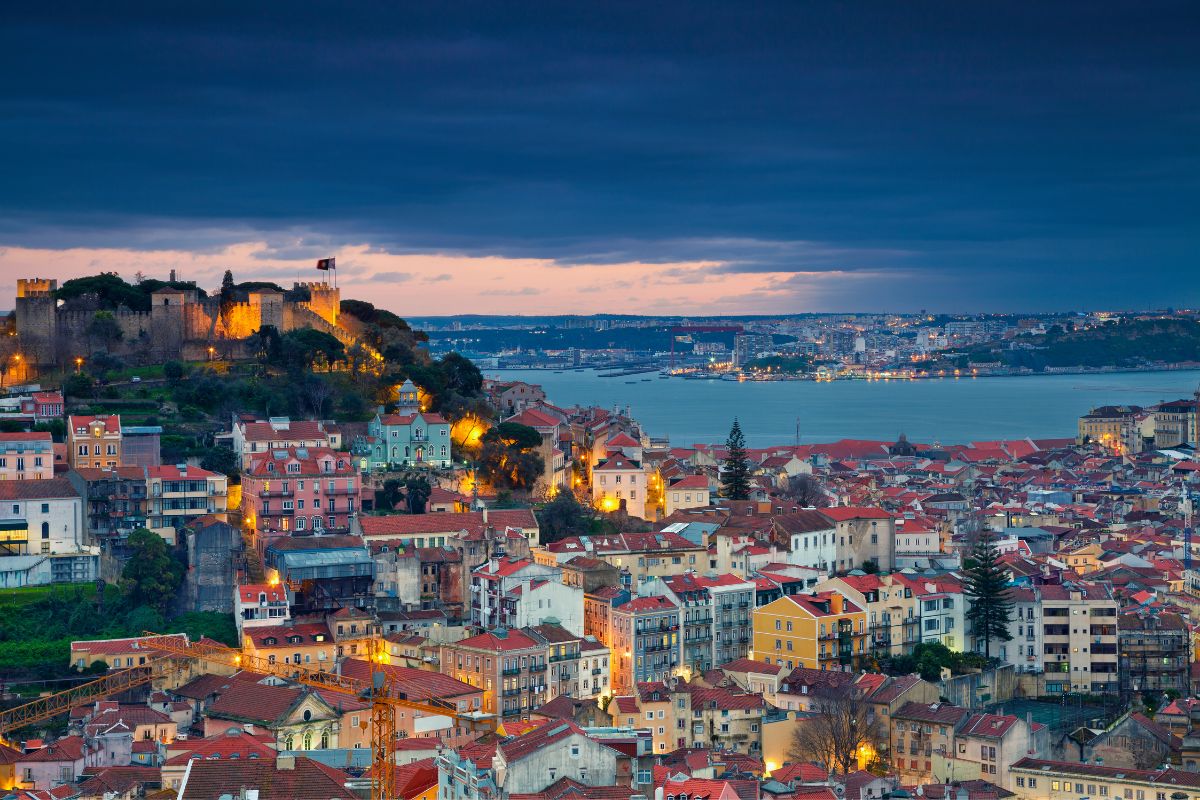
Covered in this guide
Here’s a brief look at what’s coming up in this article so that you can skip to the sections that best align with your interests:
- Alfama district – Historic district with sites like St George’s Castle and Lisbon Cathedral
- Tram 28 – Iconic tram route through some of Lisbon’s oldest areas
- Belém Tower and Monument to the Discoveries – Iconic relics from the Age of Discovery
- LX Factory – A once abandoned warehouse complex turned creative and cultural hub
- Jerónimos Monastery – A 16th-century gem of Portuguese Manueline architecture
- Santa Justa Lift – Wrought-iron elevator designed by former Gustave Eiffel student in 1902
- Sintra – A haven of historic palaces and romantic architecture amid lush rolling hills
- National Tile Museum – Insights into one of Portugal’s most distinctive crafts
- Palácio Nacional da Ajuda – The neoclassical final former royal residence in Lisbon
- Aqueduto das Águas Livres – An 18th-century feat of engineering
A detailed look at Lisbon’s must-see sights
From historic districts like Alfama to iconic landmarks such as the Belém Tower and the Jerónimos Monastery, here are the attractions that you simply must visit during your stay in Lisbon:
1. Alfama district
Characterised by steep cobbled streets lined with traditional cafés, quaint indie stores and fado clubs, the postcard-perfect neighbourhood of Alfama is home to many of Lisbon’s best-known historic landmarks.
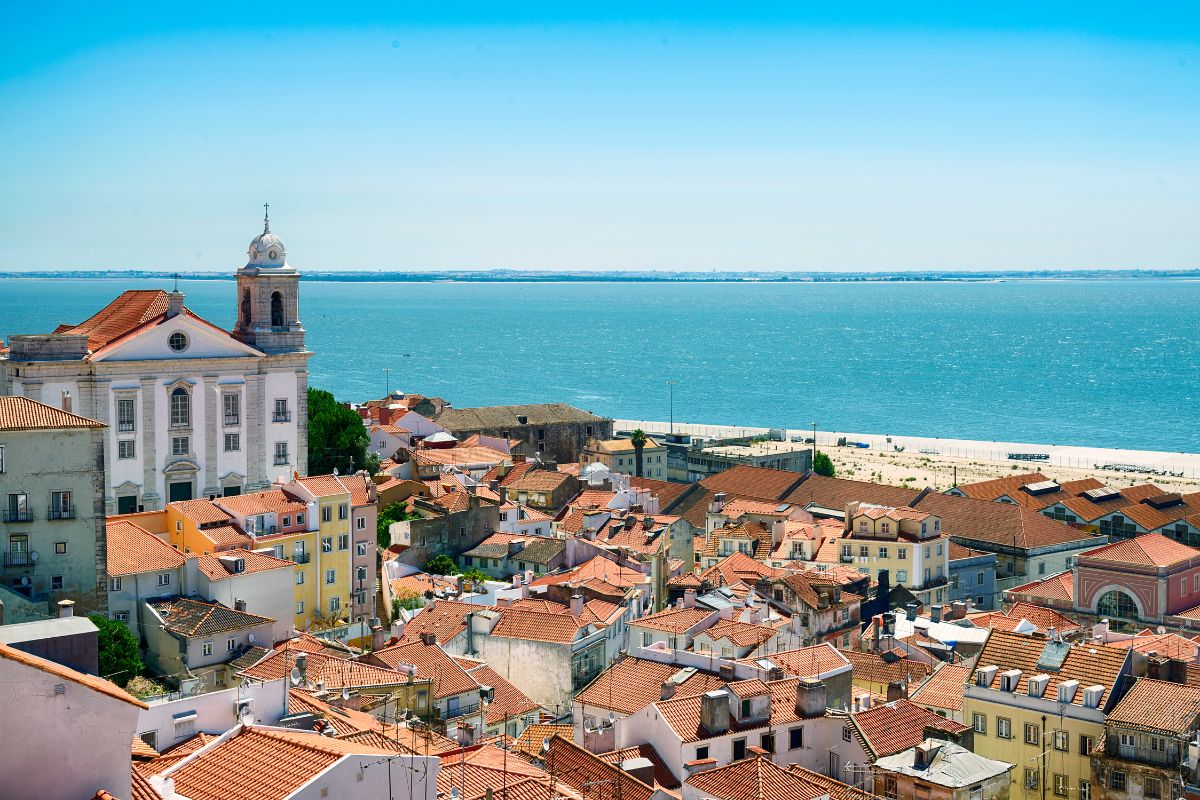
The most famous attraction in Alfama is probably São Jorge Castle, which has been the site of fortresses for civilisations including the Phoenicians, Carthaginians, Romans, Moors and Portuguese. Most of the current structure that you can explore today dates back to the 12th century.

Other must-visit attractions in Alfama include the 12th century Lisbon Cathedral, Feira da Ladra (Lisbon Flea Market) and the 17th-century Panteão Nacional (National Pantheon).
2. Tram 28
Starting from Praça Martim Moniz, you can board a vintage “Remodelado” tram and ride along the iconic Tram 28 route through some of the oldest areas of Lisbon.

The tram meanders through neighbourhoods including Alfama, Baixa, Estrela, Graça and Mouraria. Along the route, you’ll catch a glimpse of landmarks like the São Bento Palace, São Vicente de Fora Monastery, National Pantheon, Lisbon Cathedral and the Carmo Convent.
You can also hop off at stops that provide easy access to some of Lisbon’s best viewpoints, such as the pergola-laden Miradouro de Santa Luzia observation deck and the nearby Portas do Sol.
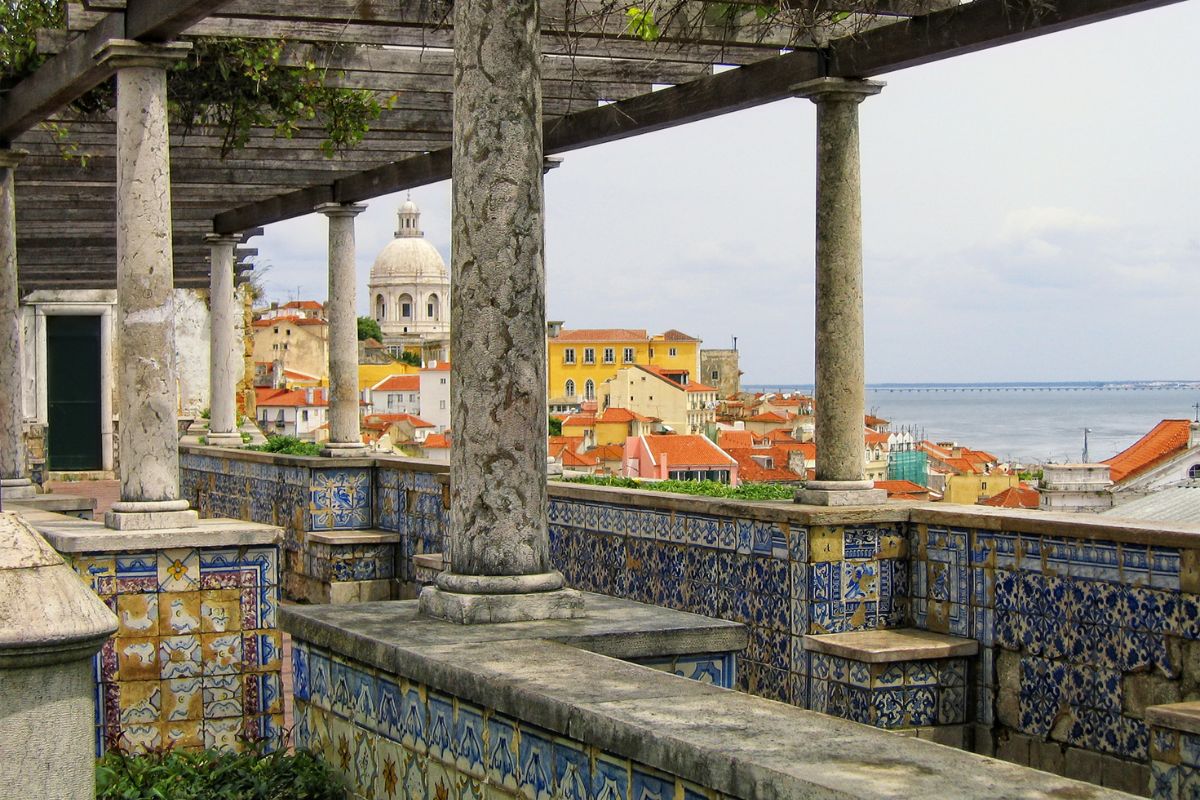
While you can simply hop aboard the tram and pay the driver around EUR 3 for a single journey, you can buy a prepaid transport card that’s valid for 60 minutes from first use for EUR 1.80.
We recommend that you buy a day pass for EUR 6.80 that gives you unlimited journeys on the Carris and Metro networks, which includes the Tram 28 route. Day passes are available at just about any metro station in Lisbon as well as online.

3. Belém Tower and Monument to the Discoveries
What appears to be a mini fairytale castle rising out of the Tagus River is the 16th-century Belém Tower, constructed to protect Lisbon’s harbour during the Age of Discovery when Portugal was expanding its global empire.

On this UNESCO-listed, Manueline (sometimes known as Portuguese late Gothic) tower, you’ll see intricate stonework motifs that pay homage to the era. Notable sculptures include Lisbon’s patron saint St Vincent and the Catholic Crosses of Christ.
Not far from the Belém Tower is the Monument to the Discoveries. Conceived back in 1939, the current sail-shaped waterfront monument featuring sculptures of historic Portuguese figures was completed in 1960.
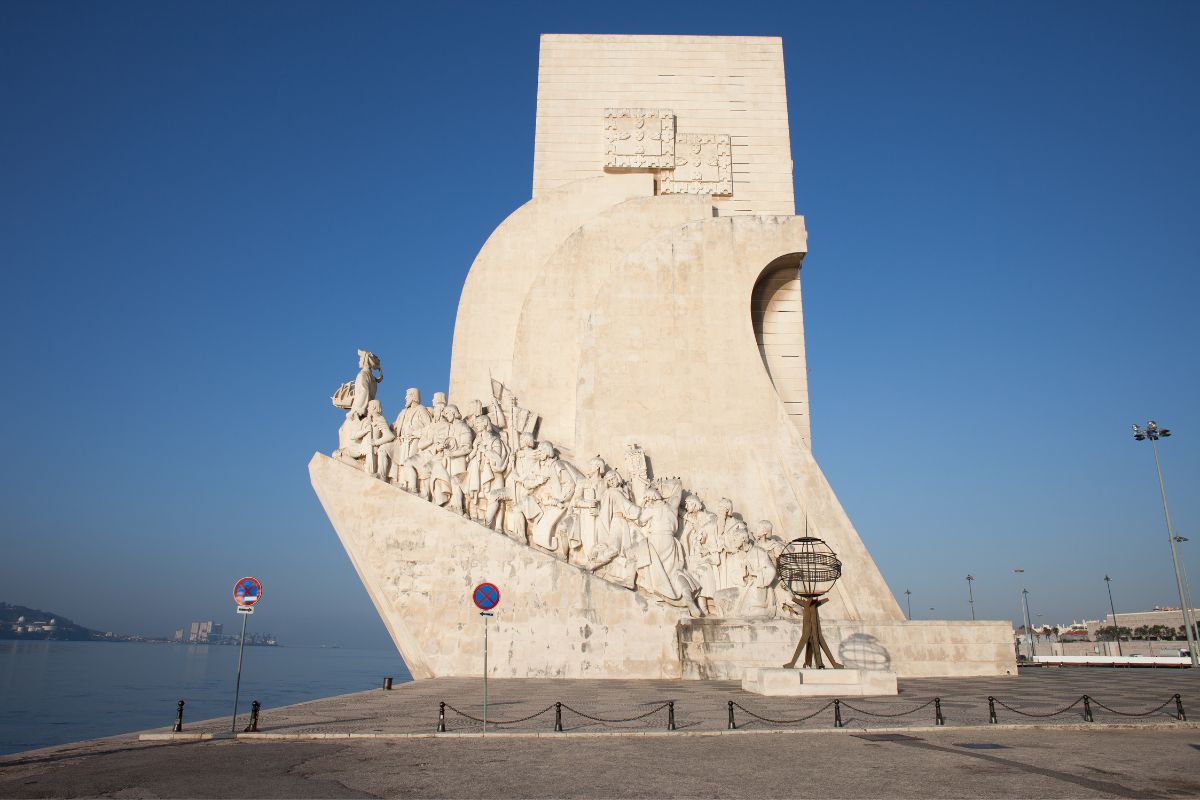
4. LX Factory
Situated within what was an abandoned warehouse complex dating back to 1846 is LX Factory, a trendy and creative hub full of carefully curated shopping, dining and cultural outlets.

Opened in 2008, LX Factory has retained its industrial architecture, with stores that have kept much of their original interiors intact.
Besides an eclectic dining scene that includes some of Lisbon’s top-rated restaurants, LX Factory is home to hip cafés and well-known quirky stores. The Devagar bookstore is well worth a visit. You can stock up on locally made arts and crafts at the area’s popular outdoor weekend markets.
Adding to the neighbourhood’s bohemian vibe are colourful and intricate works of street art around almost every corner. LX Factory also hosts a range of cultural events throughout the year.
5. Jerónimos Monastery
The truly spectacular, UNESCO-listed Jerónimos Monastery is probably the finest example of Portuguese Manueline architecture in Lisbon.
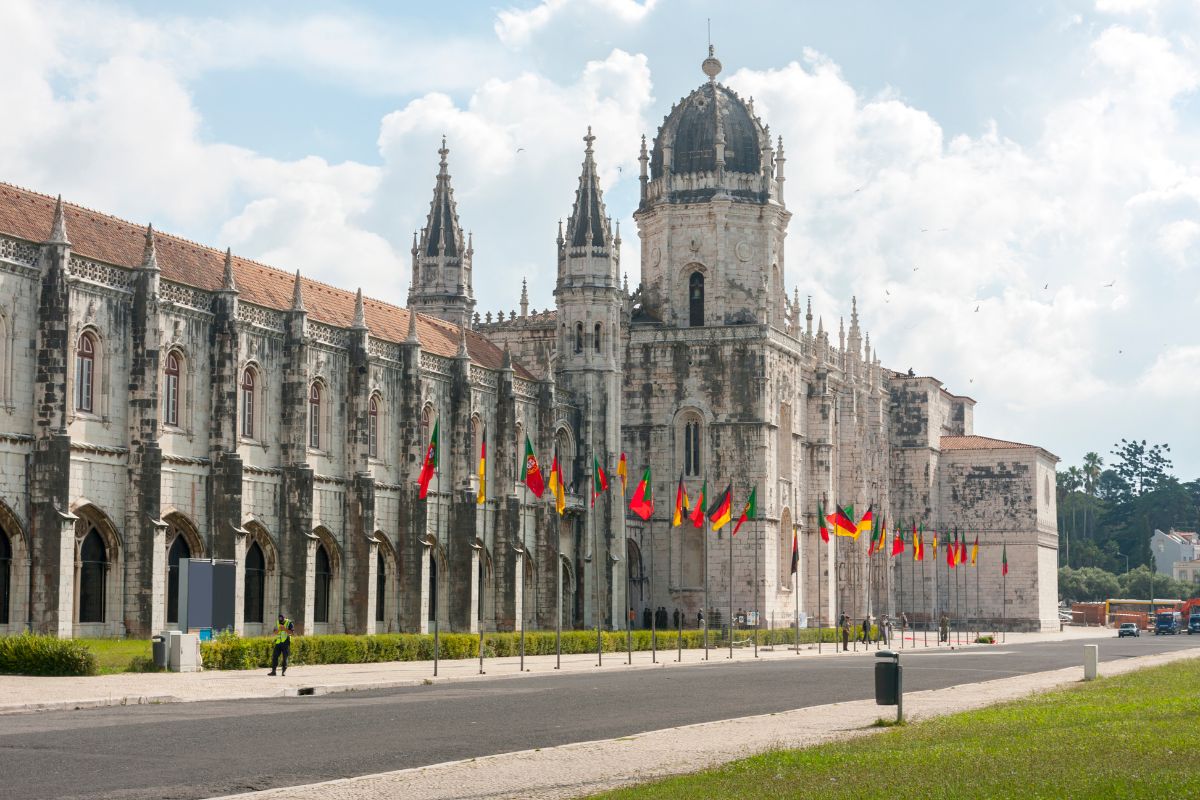
Funded partly by the spice trade profits of the Portuguese India armada, the monastery’s construction started in 1501 and took 100 years to complete.
After housing the monks of the Order of Saint Jerome until 1833, the Jerónimos Monastery has served as a school, orphanage and national monument.
Today, you can explore the monastery and its famous church (Igreja de Santa Maria de Belém) at your own pace.
Highlights include the tombs of Vasco da Gama and Fernando Pessoa, the Chapter Room, the Confessional Doors and the Hieronymite Order. Throughout the complex, you’ll notice intricate details from vaulted ceilings to expertly carved pillars.

Admission tickets to the Jerónimos Monastery start at EUR 12. You can get tickets with an audio guide for as little as EUR 21 or an in-person guide for EUR 32.
6. Santa Justa Lift
The Santa Justa Lift is a wrought-iron elevator that opened in 1902 to connect the Baixa (downtown) area to the neighbourhoods of Bairro Alto and Chiado up the hill.

Designed by Portuguese engineer Mesnier de Ponsard, a former student of Gustave Eiffel, this Gothic Revival masterpiece has been a national monument since 2002.
You can climb a spiral staircase at the top of the elevator to a viewing platform that offers 360-degree views over Lisbon from an elevation of 45 metres.
As the Santa Justa Lift remains a part of Lisbon’s public transport network (managed by Carris), a one-way trip costs the same as a single bus journey – EUR 1.80 if purchased in advance. You can also buy a day pass for the Carris and Metro networks for EUR 6.80.
7. Sintra
With its opulent palaces and villas amid lush rolling hills, the UNESCO-listed town of Sintra is a dreamworld that the likes of Disney would struggle to imagine.

This idyllic civil parish is considered to be among the first centres of luxury romantic architecture in Europe. One of the most extraordinary examples of the area’s architecture is the hilltop Pena Palace, which is visible from Lisbon on a clear day.
Other architectural gems of Sintra include Monserrate Palace, Seteais Palace (now the 5-star Tivoli Palácio de Seteais), the Quinta da Regaleira, and the Sintra National Palace, a former royal residence with an eclectic mix of architectural styles.
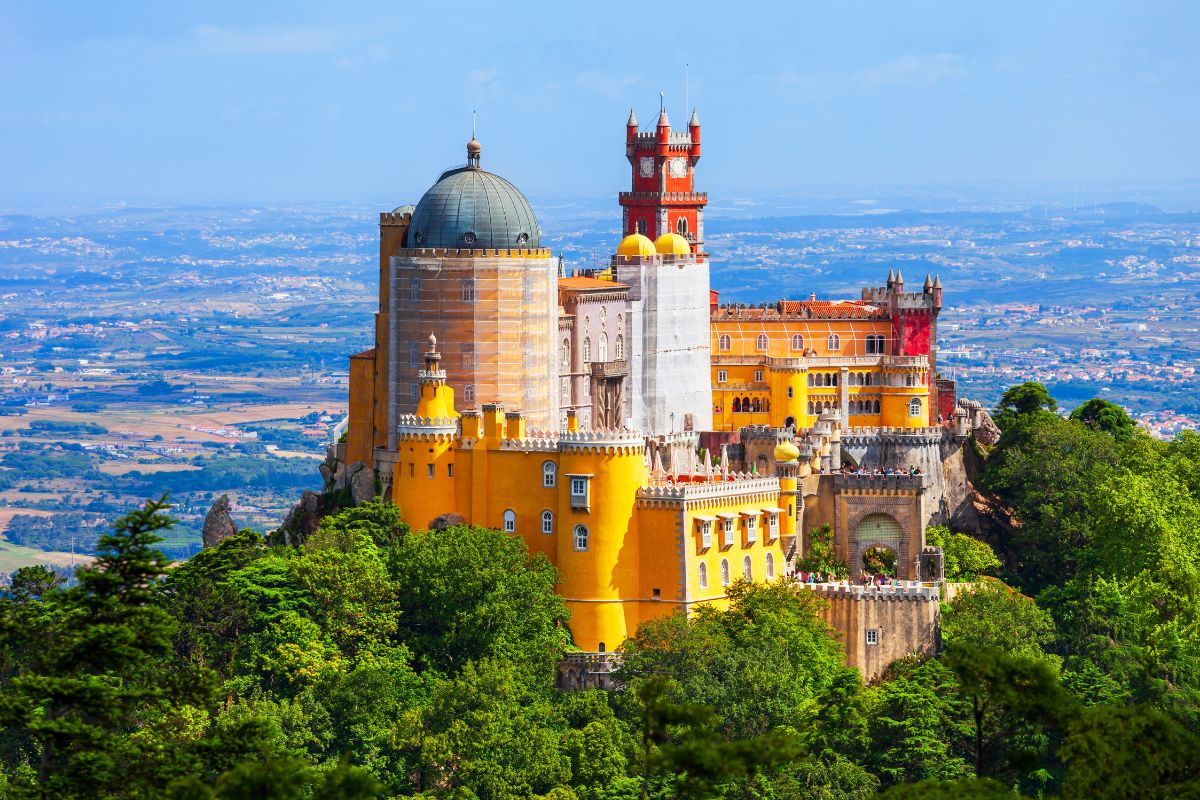
History buffs shouldn’t miss the chance to visit the Castle of the Moors. From these well-preserved 8th-century fortress ruins, you can take in panoramic views of Sintra and the surrounding countryside.
It takes about 40 minutes to get from Lisbon to Sintra by train, which depart about every 20 minutes from Rossio Station. Single-journey tickets cost as little as EUR 3.
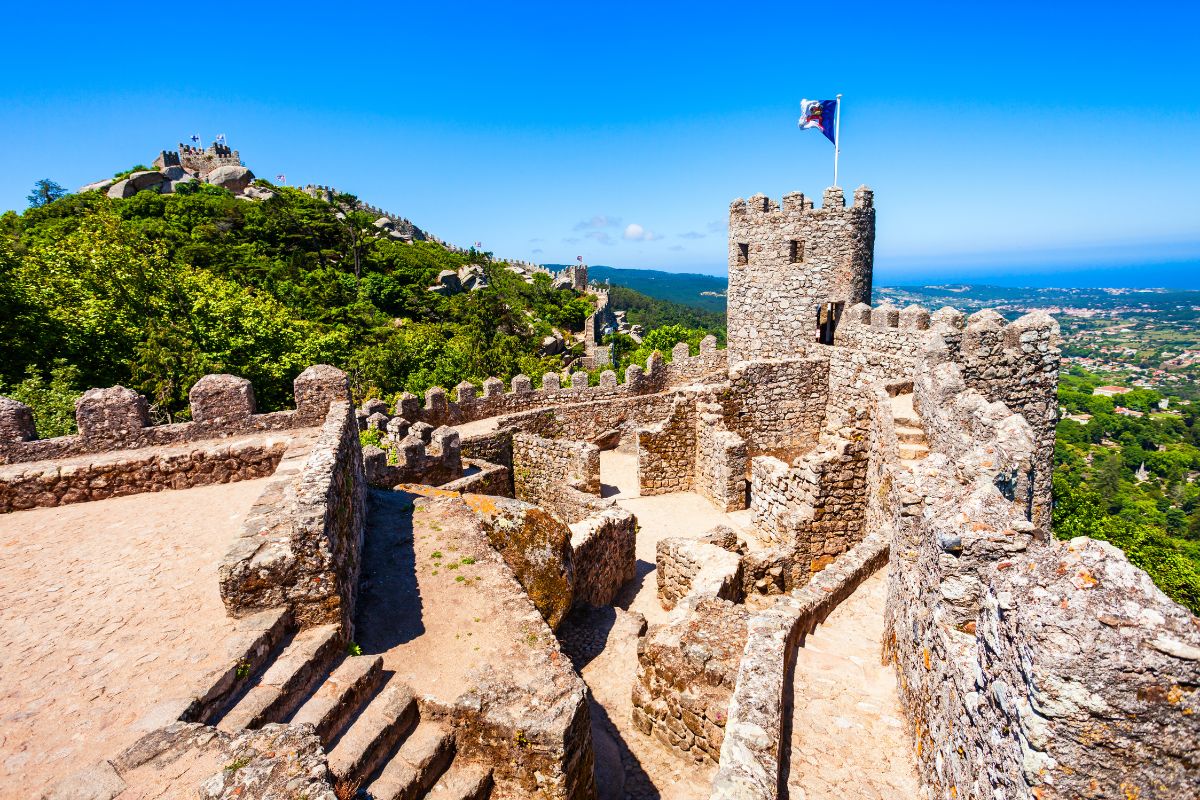
8. National Tile Museum
One of the most recognisable characteristics of Lisbon’s architecture is the use of vibrant ceramic tiles known as azulejos. You can learn about the history and making of these distinctive Portuguese tiles at the National Tile Museum, housed inside the 16th-century Madre de Deus Convent.

Some of the tiles on display inside this unique museum date all the way back to the 15th century. You’ll see individual tiles decorated with boats and floral patterns as well as grand murals consisting of hundreds of tiles detailing events and legends from history.
Ticket prices at the National Tile Museum start at EUR 8 per adult.
9. Palácio Nacional da Ajuda
Even though the Palácio Nacional da Ajuda (National Palace of Ajuda) is considered Lisbon’s final royal palace, its construction was never actually finished.
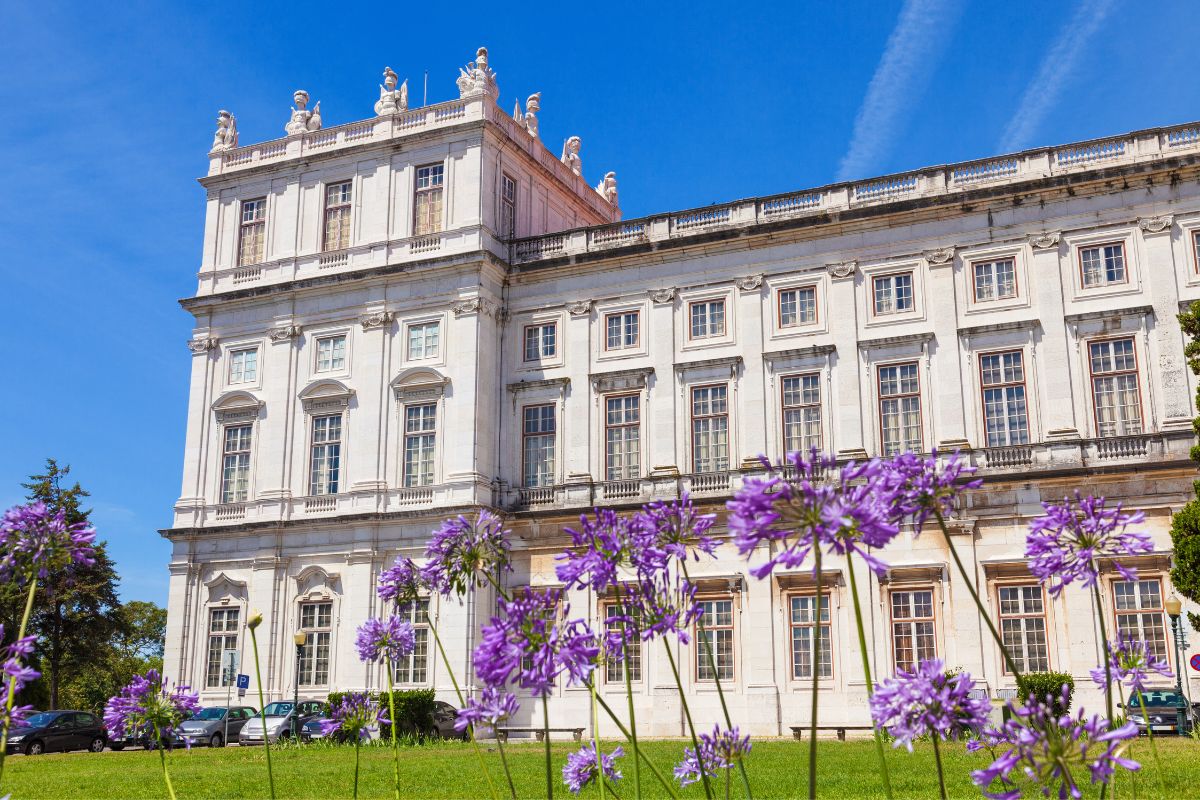
Work on this neoclassical architectural wonder started in 1794, but it was interrupted during the 19th century when Napolean’s invasion of Portugal forced the royal family to flee to Brazil.
Despite being unfinished, this nonetheless grand structure was the primary royal residence during the late 19th century, until the monarchy was abolished in 1910. It became a museum in 1968. Look inside, and you’ll see collections of decorative arts that the royal family left behind. You can also admire the crown jewels.
After exploring the palace, take a stroll through the nearby Jardim Botânico da Ajuda. Dating back to 1768, these botanical gardens contain exotic trees and plants plus fountains and sculptures from as far back as the 18th century. You can also soak up superb views of the 25 de Abril Bridge.
Ticket prices at the National Palace of Ajuda start at EUR 8 per adult. You can also get combo tickets that include skip-the-line entry to the palace and the Royal Treasure Museum for as little as EUR 18.
10. Aqueduto das Águas Livres
Visit the Águas Livres Aqueduct to gain insights into 18th-century Lisbon life while exploring one of the most impressive feats in hydraulics and engineering from the era.

The aqueduct’s 14 largest stone arches rise to a height of 64 metres, making them the world’s tallest when built. In total, the aqueduct boasts 109 arches, many of which are decorated with baroque tiles depicting the consumption of water over history.
Amazingly, the Águas Livres Aqueduct survived the 1755 Great Lisbon earthquake with very little damage. It still stretches an impressive 14 kms from Caneças to the main Mãe d’Água das Amoreiras reservoir complex, where you can browse temporary exhibitions and ornate 18th-century fountains and architecture.
The Aqueduto das Águas Livres and its reservoirs now belong to the Museu da Água (Water Museum), situated inside the 18th-century Barbadinhos Steam Pumping Station. Admission tickets start at just EUR 2 per adult.
Anything to add?
Even if you’re only staying in Lisbon for a week or two, you can gain insights into this incredible city’s fascinating past by visiting the attractions detailed in this guide. We’ll keep adding even more Lisbon highlights to this article from time to time, and we could really use your help.
What attractions in Lisbon do you think deserve a place on every traveller’s bucket list? Are there any historic landmarks we should include in this guide? Do you have any money-saving tips or other useful advice for our community of digital nomads? Let us know in the comments below.




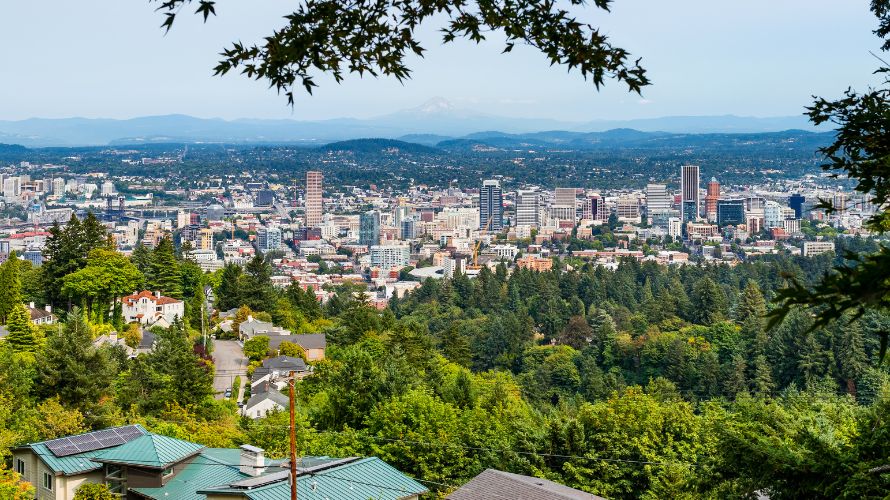





0 Comments